This article highlights the majestic Copan Archeological Site in Honduras. Copan is considered one of the major Mayan city-states.
I can talk about the feelings rushing through my body when I visited Copan. But I am not going to do that. Nothing I experienced that day can be compared to the stories the ancient inhabitants of this Mayan city already wrote.
The master craftsmen of Copan did not write the astonishing events of their people with ink. They sculptured pictorial words in stone. Many of the carvings completed in the 7th and 8th centuries A.C. are still standing. Modern archeologists are only starting to decipher the Mayan written language. They have been able to read the stories of the people who roamed the Copan Valley many centuries ago.
Copan was an unassuming Mayan city until its 13th ruler 18 Rabbit (Uaxaclajuun Ub’aah K’awiil) took power. He was the person responsible for elevating the city to ranks similar to other powerful city-states (Palenque, Calakmul, Tikal). Art and sculpture flourished during this time.
The Copan we see today is the product of the apogee era (under the rule of 18 Rabbit). Today, I want to show some of the highlights of the Athens of the Mayan World.
The Great Plaza
This is where the stelae (stone slabs carved in relief) are located. Most of them are portraits of 18 Rabbit (how modest was he). The backsides of the stelae are covered in glyphs (written language). There are also covered with small pyramids (mounds) and carved altars. This is the place to take a good look at the supreme skills of Mayan sculptors.
The Ball Court
This is the second-largest ball court found in Central America. I like this particular court because the annotation rules were different from what I have seen in other Mayan sites. In places like Chichen Itza, a point was obtained by passing the ball thru a ring in the wall. In Copan, there are three macaw heads on each side of the court. A point was obtained by touching one of the heads with the ball.
Hieroglyphic Staircase
The hieroglyphic staircase is made up of 63 steps and two thousand glyphs telling the story of the royal house of Copan. The stairway is the site of the longest known text of ancient Mayan civilization. When experts started to study Copan, many of the pieces of the staircase were on the floor or destroyed. Early restorations placed pieces in incorrect places. The text hasn’t been read yet.
West Court
This place contains mounds, sculptures, and the place where the Rosalila Temple was discovered. The Altar Q depicts the 16 members of the Copan Dynasty. Interesting to see how the last ruler of the city ordered the construction of this altar. It is like he knew he was going to be the last ruler.
Residential or Cementary Group
This is a large complex of overlapping step pyramids, palaces, and plazas.
The Acropolis (East Court)
This is my favorite part of the entire site. The Acropolis was the royal complex at the heart of Copán. The plaza is enclosed by elevated structures. This was the place where the most distinguished residents used to congregate for political, social, or entertainment reasons.
On one side of the elevated platforms, a giant monster mouth was carved. The ruler of the city used to appear and talk to the multitude from inside the mouth. This was a symbol of his power.
View of the Great Plaza from the Acropolis
This is the characteristic view of the Copan site. It is so famous that it has been printed in the one lempira bill. Don’t miss this view.
Suggestions
- It is cost-effective to hire a guide on the site. The guide fees are regulated by the tourist entity and are not stupid high like in other Mayan places. You can split the cost with other people in your group. If there are not enough people to form a group, wait till other visitors arrive and ask them to form a group with you. Three to four people is good enough to save money but still, have a nearly private experience.
- Don’t rush through the site.
- Bring water and snacks. Place trash in appropriate containers.
- Go prepared for the heat (sunglasses, sunblock, hat, etc.)
Other Things to Do on the Site
- Observe the Scarlet Macaws who have been released in the area
- Visit the tunnels (extra charge, I didn’t visit because I have heard it is not worth it for the price)
- Visit the Museum of Sculpture (extra charge but recommended, read my experience below)
- Visit Las Sepulturas. This is the site of the Elite Mayan houses. The entrance is included with your general ticket.
Museum of Sculpture
A visit to the Copan Archeological Site may take several hours. A discovery walk through a place like this shouldn’t feel rushed even though the heat and humidity may be pounding your body. And don’t forget you need to save energy for what comes after. The feast doesn’t end when you are done with the ruins.
The Archeological Site has a Mayan Sculpture Museum (Museo de Escultura Maya) on its grounds. There are several reasons why this museum is a must-see (even if you don’t like museums).
This museum has been designed to depict several aspects of the Mayan cosmology. The four corners of the building are aligned with the cardinal points. The first level symbolizes the underworld and thus sculptures of bats, skulls, and death can be found there. The second level contains facades of many buildings and stelae which are artifacts that are found in the aboveground reality. The facilities are illuminated by an open-air skylight.
Entrance to the museum is done through the mouth of a stone serpent (Mayans believed this was a way to communicate with its ancestors) and a tunnel similar to those found in the ruins.
After a few minutes of obscurity, you are faced with bright reds, yellows, and greens (the same colors that once covered the entire ruins). A replica of the Rosalila Temple stands in the middle of the museum. The original temple is buried under one of the structures in the archeological site.
Additionally, there are over 60 exhibits showcasing the best work of the Mayans who inhabited the Valley of Copan. There are signs (in Spanish and English) explaining each piece. If you want to learn more, hire a guide (negotiate the price).
As you can see this is a museum containing artifacts that cannot be seen anywhere else. Pay a visit and delight in what Mayans left for posterity.
Have you visited this Copan Archeological Site? Let me know in the comments section below.
Have you been to Copan? Let me know in the comments section below.

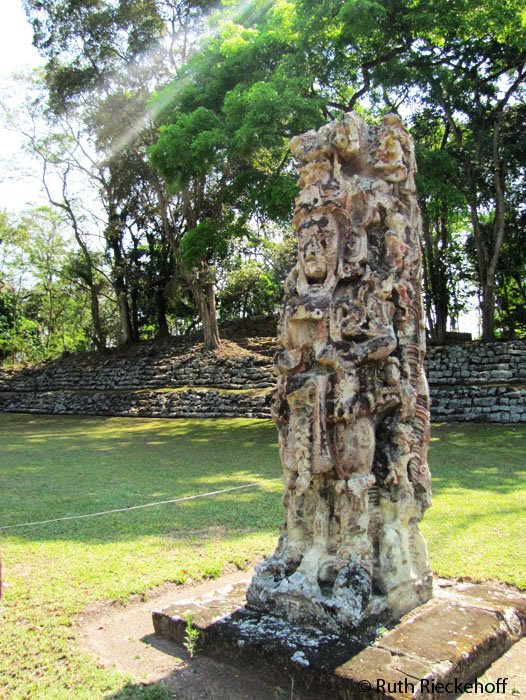
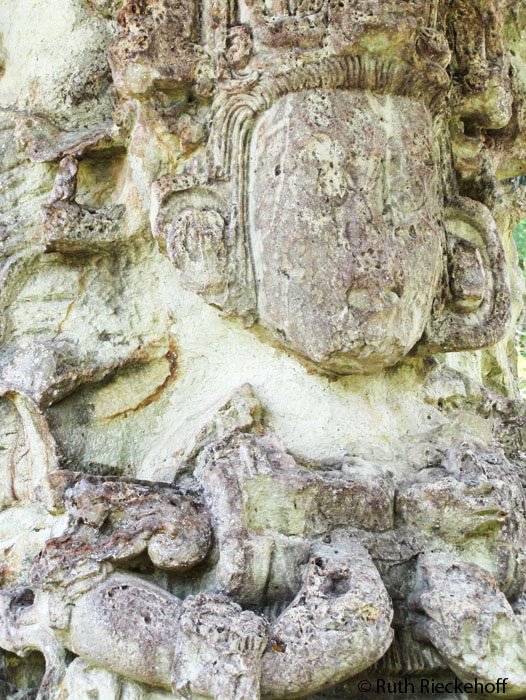
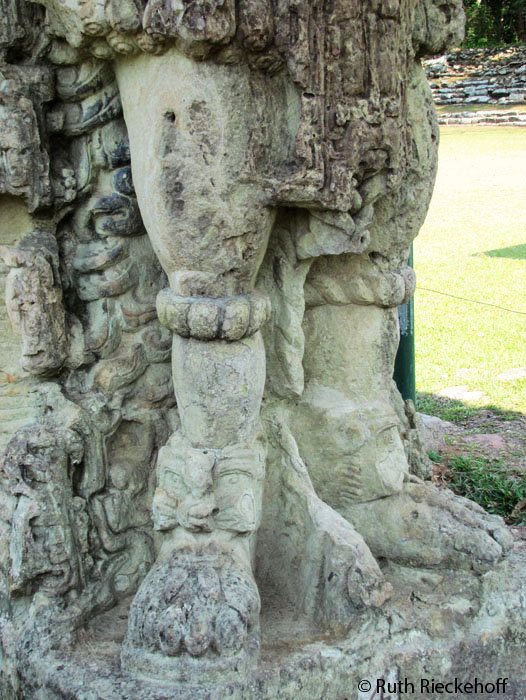
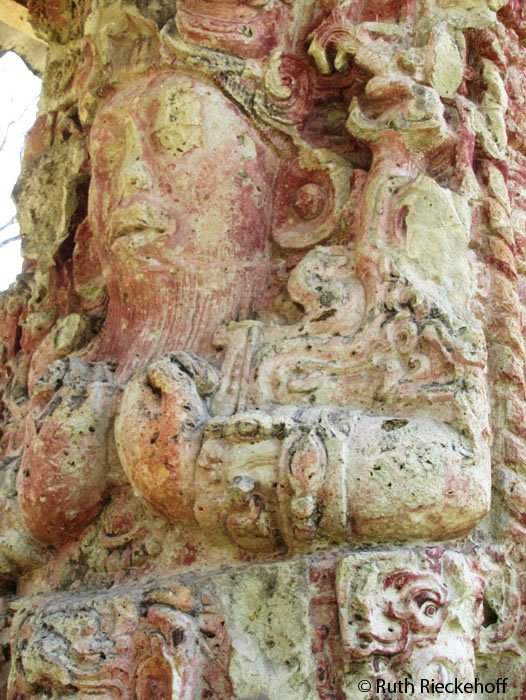
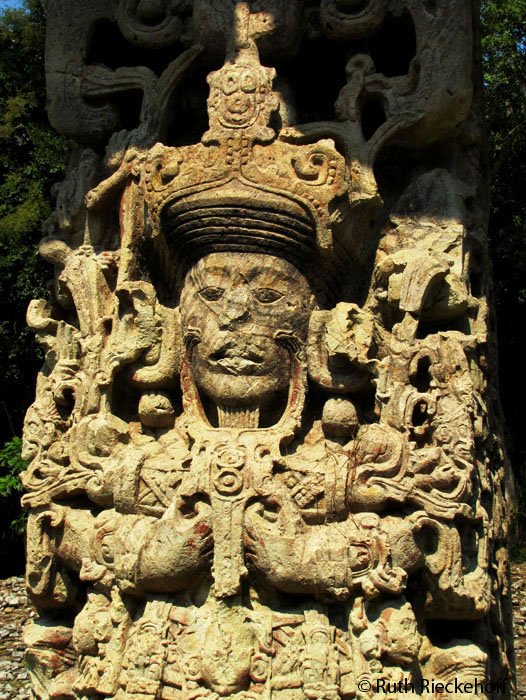
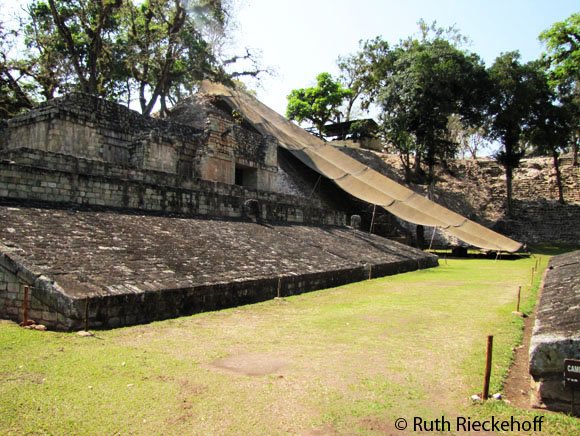
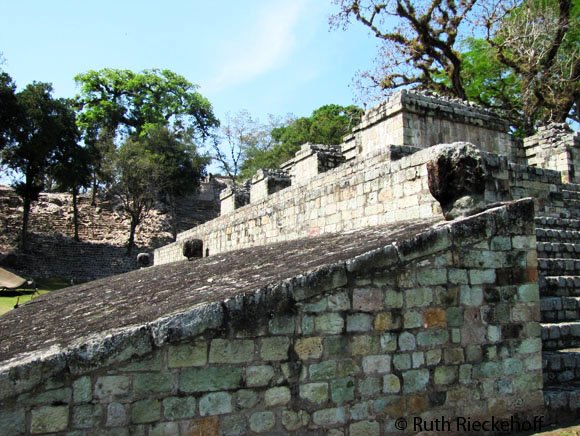
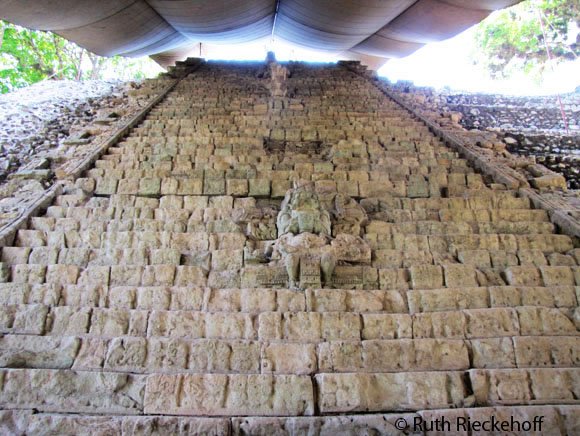
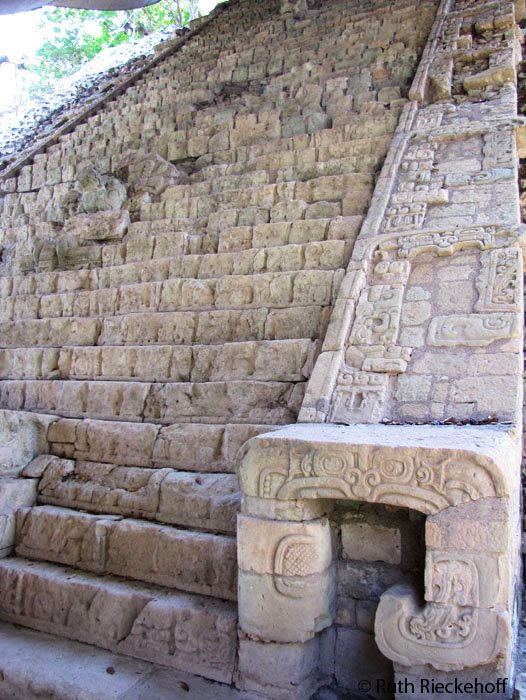
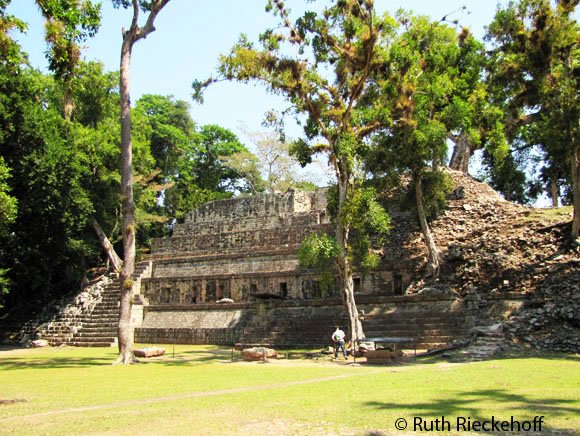
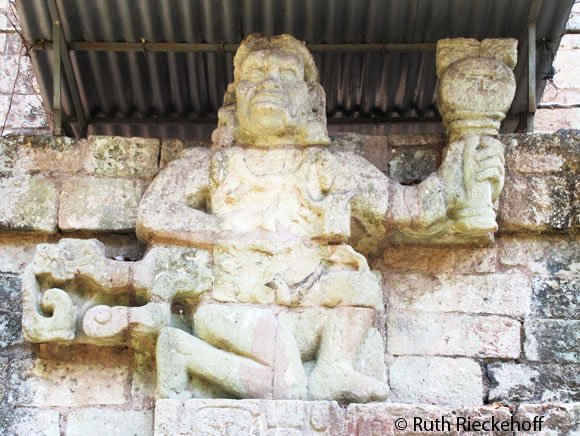
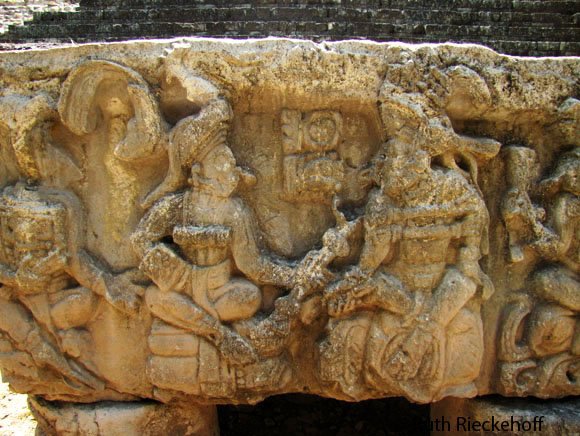
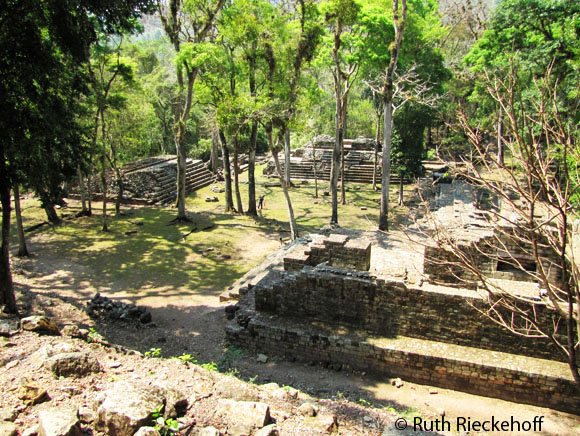
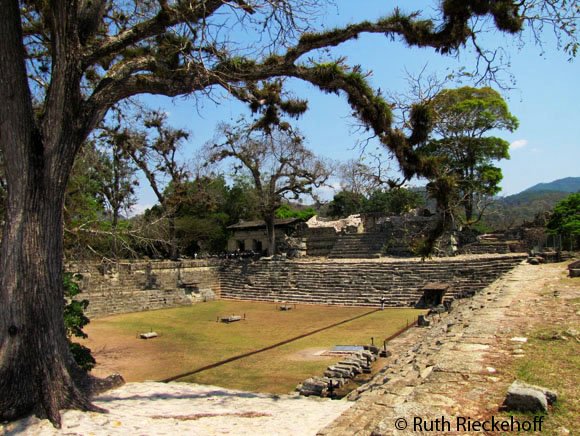
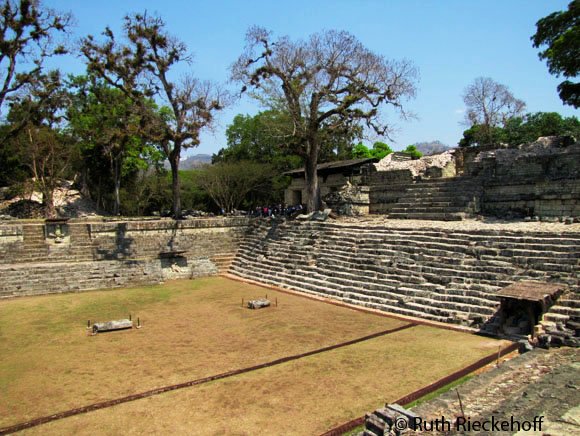
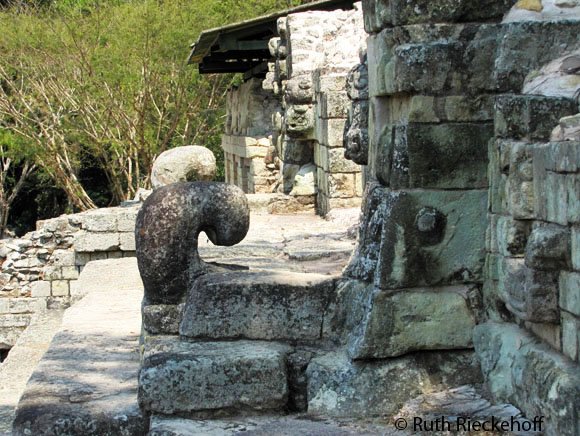


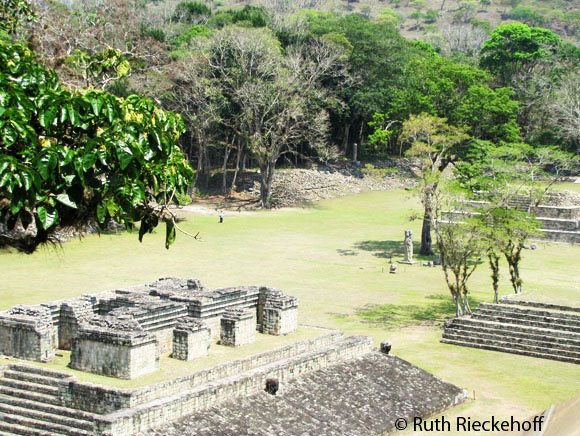

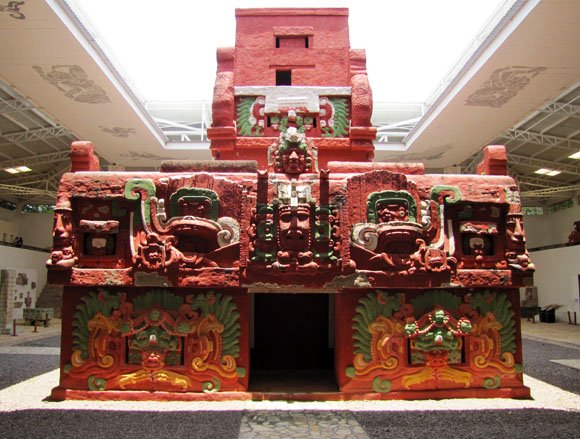
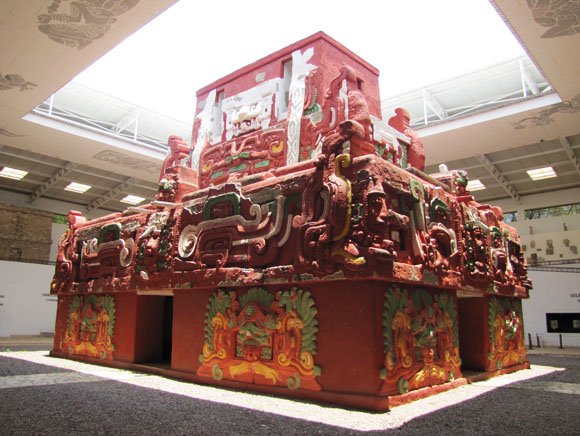

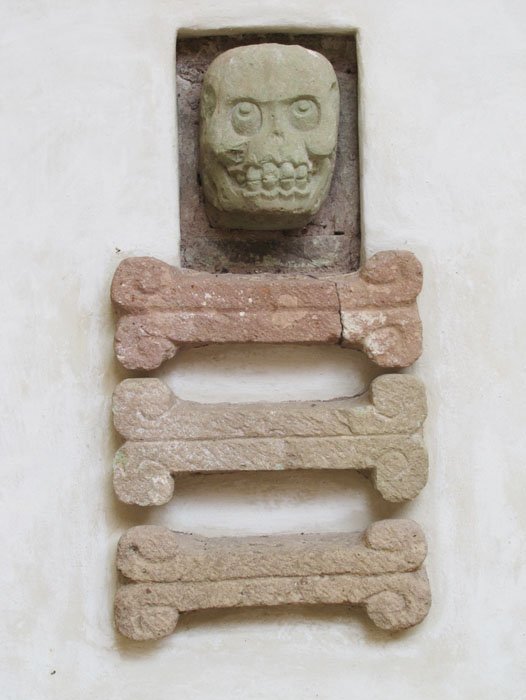
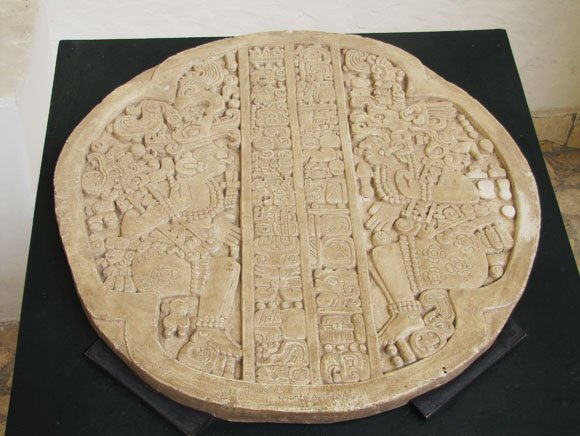
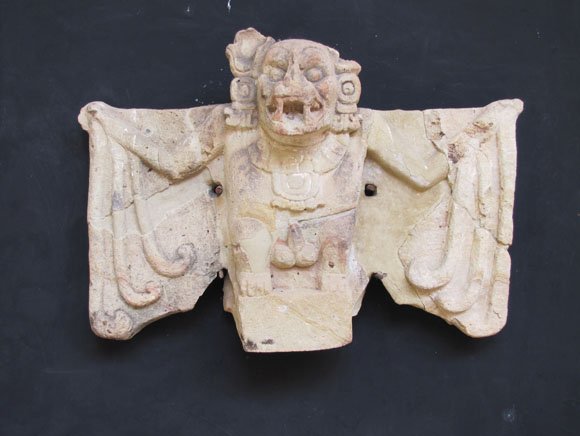
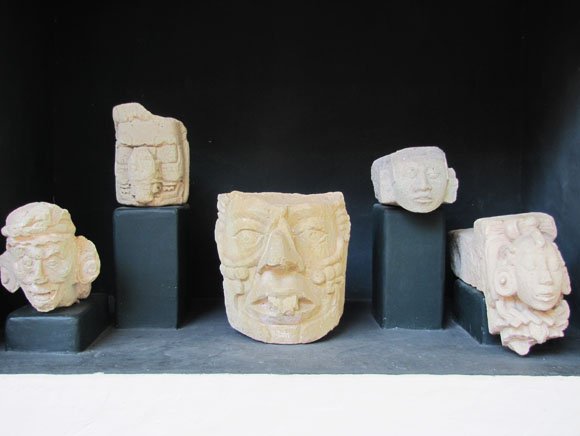
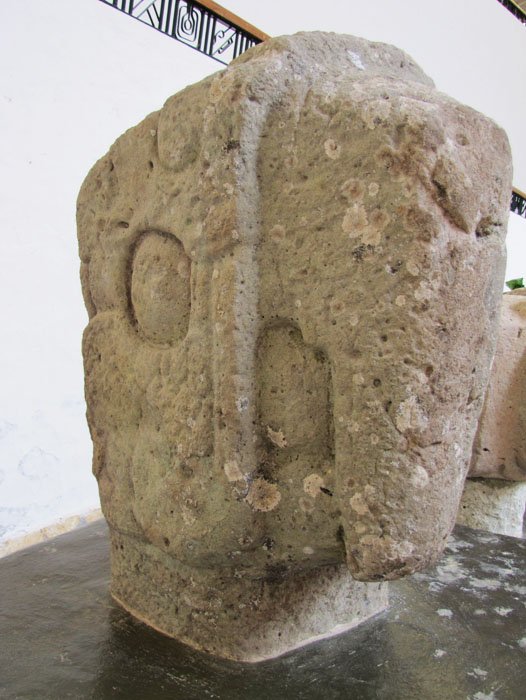
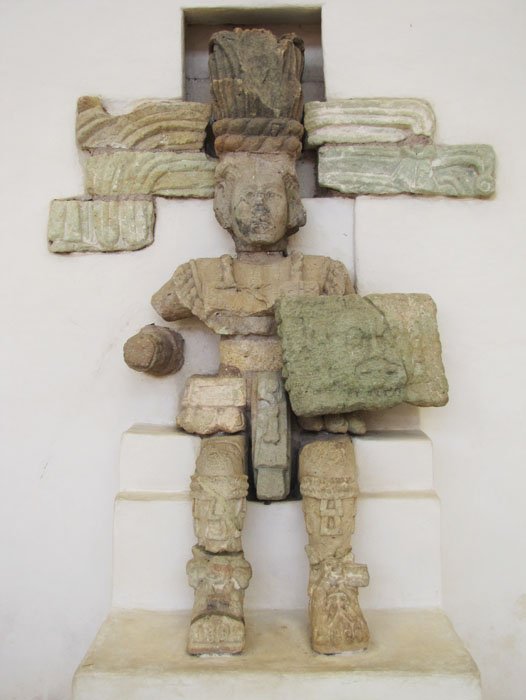

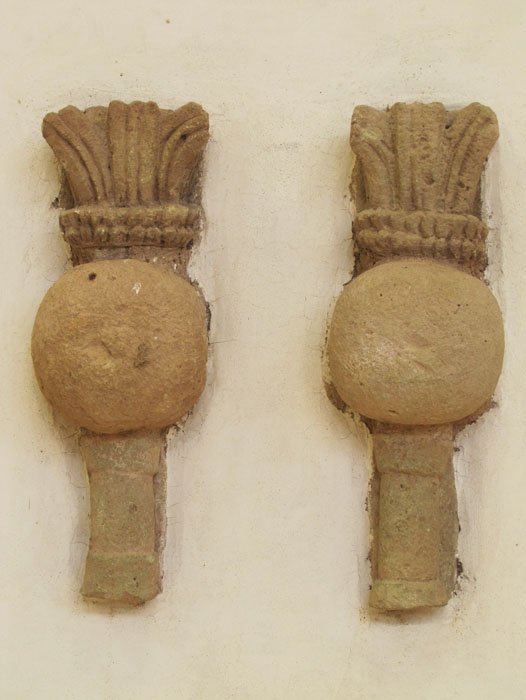
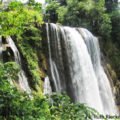

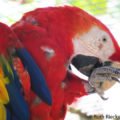

Jaime says
Ahh I love this. Copan was my first ruins ever so it holds a special place in my heart. I still remember every detail of that day. I loved it so much… oh & the town was so damn cute. You got some great pictures. It’s crazy how much history those stones hold and how long they have lasted!!!
Ruth says
Yes, the town is the bomb. I loved it. I could have stayed in the area for weeks. As a matter of fact, I want to go back even though mosquitos were really agressive.
Christopher says
Great places, great pics. Loved this, Ruth!
Ruth says
Cool!! Have you been to Copan?